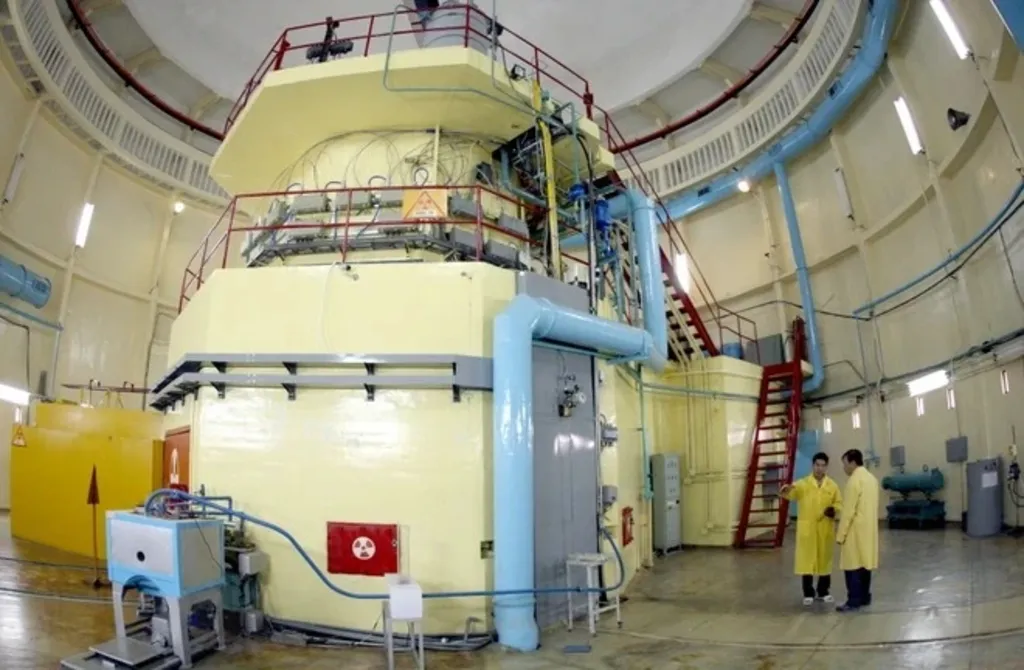 |
| Dalat Nuclear Reactor, currently the first and only one in Vietnam__Photo: VNA |
The following article by Minister of Science and Technology Nguyen Manh Hung, originally published in VnExpress, outlines key provisions in the draft amended Law on Atomic Energy and affirms the role of nuclear power in the country’s sustainable energy development strategy.
According to global trends, nuclear power is anticipated to contribute between 10 and 30 percent of national electricity output. After a period of decline 10–15 years ago, nuclear energy is once again being positioned as a national strategic priority. This shift is driven by countries’ increasing pursuit of energy independence, carbon neutrality, and technology repositioning. Today’s nuclear technologies—especially Generation III+ and the emerging Generation IV ones—offer exceptionally high safety standards. Hence, nuclear power lies at the heart of the draft law, both in terms of developing the application of nuclear power and formulating a legal framework for safety and security management.
Assurance of safety for the development and use of atomic energy in general and nuclear safety in particular must be placed under the unified management of a competent state agency and align with international safety standards, especially those of the International Atomic Energy Agency (IAEA), including also procedures for grant of nuclear safety-related licenses throughout all phases of a nuclear power plant’s lifecycle.
To facilitate the successful development of Vietnam’s first nuclear power plant, the draft law introduces special mechanisms to expedite project implementation. These include provisions for exceptional contractor designation in procurement processes, the application of international and vendor-specific standards, and the inclusion of appraisal and training expenses in the project’s cost estimates. The full lifecycle of a nuclear power plant—from site selection and feasibility studies through to decommissioning and post-closure management, will be strictly managed. This comprehensive approach is consistent with international best practices and is considered essential.
To ensure safety and security at nuclear facilities, including nuclear power plants, the draft law devotes a separate chapter to regulating facility safety and security. An additional chapter addresses nuclear power plants specifically, mandating continuous regulatory oversight throughout the plants' lifecycle. It also introduces requirements for incident response planning, capacity development, and the promotion of a strong nuclear safety and security culture, especially as nuclear energy applications expand into various areas of society.
The draft law also establishes a comprehensive legal framework for state management in the atomic energy sector, covering both the development of peaceful applications and the assurance of safety and security. Safety and security principles are systematically integrated across all provisions, applying to radioactive sources, radiation devices, nuclear materials, reactors, and spent nuclear fuel. A dedicated chapter on nuclear inspections further reflects Vietnam’s commitment to cooperating with the IAEA, ensuring that all nuclear activities in the country serve peaceful purposes and fulfill Vietnam’s international obligations. This is especially timely as the country moves forward with a new research reactor and preparations for the Ninh Thuan nuclear power project.
Vietnam will adopt strong policies to advance the civil use of nuclear energy. A risk-based classification system will be introduced to assess radiation impacts on human health and the environment, facilitating the appropriate socialization of nuclear applications. This will support the use of cutting-edge nuclear technologies to serve people’s life and socio-economic development. Enterprises will be encouraged to invest in the atomic energy industry, helping to ease the burden on the state budget. The State will also implement human resource training and development programs for the atomic energy sector, provide incentives to attract domestic and international experts, and offer support to individuals selected for specialized training in atomic energy.
Vietnam is also working toward mastering nuclear energy technologies as a foundation for socio-economic development. The goal is to gradually establish a national nuclear industry, encompassing nuclear power plants and research reactors for radiation research and application. Key priorities include building domestic capacity in nuclear technology—especially in the production of equipment for nuclear energy application, radiation monitoring, and safety assessment and evaluation. In the early phase of the localization strategy, emphasis will be placed on the manufacturing of equipment for application of atomic energy, radiation monitoring and safety assessment and evaluation. In the long term, Vietnam aims to localize nuclear technology itself.
The draft law also envisions a comprehensive digital transformation in the management of atomic energy and nuclear energy. It supports the decentralization of certain management responsibilities to local authorities, based on the risk levels associated with radioactive sources and radiation equipment. A national management system and database will be developed to support effective oversight of nuclear applications and ensure safety and security. The State will invest in a unified digital platform for radiation and nuclear safety. This platform will serve as the official system for managing the declaration, licensing, registration, certification, and the control of import and export of nuclear equipment and radioactive materials. It will also support the management of radiation sources, devices, monitoring data, and other specialized reports in the digital environment.- (VLLF)









